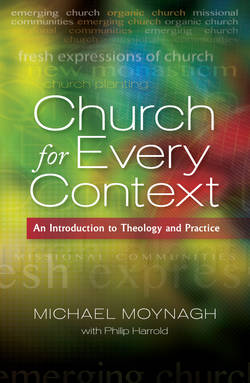Читать книгу Church for Every Context - Michael Moynagh - Страница 10
На сайте Литреса книга снята с продажи.
The emerging church conversation
ОглавлениеOriginating in the United States, this second tributary consists of a smorgasbord of groups and individuals who want to find what they consider to be more authentic ways to live the Christian faith. Found mainly among the Gen X and Gen Y generations, participants in the emerging church conversation seek to connect with popular culture, postmodern practice and philosophy, and reflect a widespread disenchantment with evangelicalism (Cox, 2009, p. 132; Jones, 2008, p. 68). The conversation, in which ‘Emergent’ is a prominent sub-group, comprises ‘a network of networks’ (Drane, 2008, p. 90) and has an extensive presence online and in print.
Some of those who would identify with the conversation have started new ‘emerging churches’. Based on an extensive study between 2000 and 2005, Eddie Gibbs and Ryan Bolger (2006, pp. 44–5) found that three core practices were common to all these churches – identifying with the life of Jesus, transforming secular space (rather than separating the sacred and secular) and living as community (as a way of pursuing the kingdom within the church and beyond). These central practices combined to create six further practices – welcoming the stranger, serving with generosity, participating as producers, creating as created beings, leading as a body and taking part in spiritual activities.
Many emerging churches have developed alternative forms of worship to re-engage Christians who find existing church culturally alien and unable to speak to them, and are about to leave the church or have recently done so. Others, however, have connected with people who are further from church, and these have tended to put less emphasis on worship as a way to serve people. Especially in the US, emerging churches are generally outside the denominations, are often highly critical of them and in many cases would be suspicious of ‘fresh expressions of church’, which are emerging in the denominations.
Language within the movement has evolved. In 2011, two observers could write that:
emergence was a word used to communicate the movement as a whole . . . Emergent currently tends to reflect churches inclusive in character of all sorts of conditions of people; emerging is more representative of churches that are evangelical and conservative in nature (Gray-Reeves and Perham, 2011, p. 3).
Doug Gay has asked whether we may be near the end of ‘emerging’ as a useful term for the church (Gay, 2011, p. xi).
